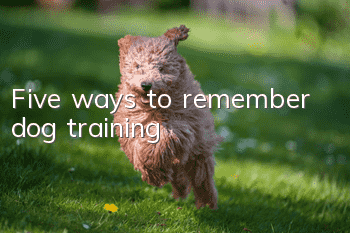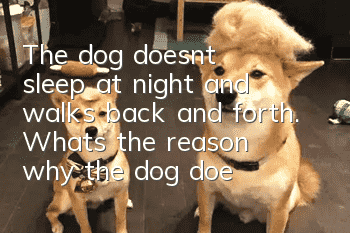Five ways to remember dog training

Utilize attachment: take the dog to a strange and quiet place and tie it to a solid object. The trainer first tries to arouse the dog's excitement, and then immediately leaves the dog and walks to a certain distance, calling the dog's name while walking. The dog will become anxious and bark when it sees the trainer walking away and hears its name being called. At this time, the trainer should immediately use commands and gestures to command the dog to bark. After barking a few times, he will run to the dog and give pats and food rewards. Do this for two or three times of border training, and then let the dog roam. In future training, the distance away can be gradually shortened until the dog can bark without leaving.
Utilize the free reflex: When the dog is confined for a long time and cannot move freely, the dog will express the desire to get out of the kennel. Therefore, you should use the barking command and gestures to command the dog to bark before letting the dog out of the house. If the dog barks, let the dog out of the kennel to reward the dog.
Utilize the hunting reflex: For dogs that are excited about picking, the most convenient and quick training method is to use the desire to pick. After using items to attract the dog, use the barking command or gestures to direct the dog to bark. If the dog can bark, reward the dog with something; if the dog is excited and does not bark, you should suddenly tie the dog to a fixed object while guiding the dog, leave the dog, continue to guide and command the dog to bark, such as If the dog can bark, you should return to the dog immediately to reward the dog.
Utilize the appetite reflex: Before feeding the dog or when the dog is hungry, the trainer holds up the food bowl or holds the food and stands outside the kennel door to lure the dog. The dog becomes very excited due to its eagerness to obtain food. At this time, if you give commands and gestures, and at the same time tease the dog with food, the dog can bark. In the early stage, as long as the dog shows signs of barking, the dog should be rewarded with food immediately. Eat a little less, and then let the dog bark. After barking, give him some food, and train like this for five or six times in a row. This is more effective for dogs with a dominant food response. In the future training, the food temptation can be gradually reduced until it is completely eliminated, and the training location should be changed frequently to make the dog bark completely according to the command and gesture.
Utilize defensive reflexes: When a dog barks when it finds a stranger or other dog approaching in the house, the trainer can issue commands and gestures in time to command the dog to bark and reward it. You can also bring the dog to yourself and let the assistant trainer slowly approach the dog from a distance and tease the dog. When the dog's attention or alertness is aroused, the trainer points his right hand to the assistant trainer and barks to the dog. "password to stimulate the dog's excitement. When the dog barks or shows signs of barking, it should be rewarded immediately with the "good" command and patting. The assistant trainer will take the opportunity of the trainer to reward the dog, stop teasing or hide. Then continue teasing the dog to bark. In this way, after several trainings, basic conditioned reflexes can be formed. In the future, the trainer's teasing can be gradually reduced and eliminated, and only commands and gestures can be used to cause the dog to bark. This method is more effective for dogs with dominant active defense reactions. However, it should not be used too much to avoid the dog developing a bad relationship of barking when seeing people.
- Dog’s anal gland odor, please note that this is a sign of your dog’s health!
- How to make your dog like to eat dog food Four ways to make your dog fall in love with dog food
- How to protect your dog’s food? Teach you tips on training your dog
- Why do dogs defecate everywhere? How can dogs stop defecating everywhere?
- What should I do if my dog has lupus? Immune system diseases should not be underestimated
- If your dog's hair is cut and the skin is cut, the flesh is exposed. If the dog's hair is accidentally cut and the skin is cut, it must be disinfected immediately.
- Do dogs need deworming in summer? What should you pay attention to when raising dogs in summer?
- What to do if your dog has indigestion? Dog indigestion is no small matter!
- What should you pay attention to when vaccinating your dog? What should you pay attention to when vaccinating your dog?
- Symptoms of Rheumatism in Dogs What conditions can cause rheumatism in dogs?



